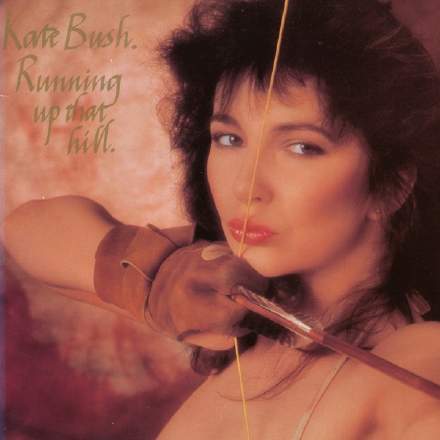
Given the public’s reignited interest in this song following its prominent use as a plot device in the fourth season of Stranger Things, I figured I’d remind myself what all the fuss was about. I’ll admit that I’ve always struggled to connect with this song emotionally on account of being distracted by her slightly ideosyncratic pronunciation of the hook (which always sounds to me like “vrunning up that hirr, vrunning up that vroad”), but putting that aside, there’s certainly a lot of interesting production stuff going on.
Many of the section lengths are unorthodox, for a start. The instrumental hooks at 0:10, 1:07 and 2:18, and verse one (0:25) are all seven bars, for instance, while the second verse is 11 bars. And the fact that the second verse+prechorus section (1:23-2:01) is 50 percent longer than the first (0:25-0:50) also goes against traditional chart orthodoxy, where the norm is for a second verse to be shorter if anything.
The use of harmonic rhythm is cool too. Not only is there generally some nice variation between sections in this respect (the shift to a two-chords-per-bar rhythm for the verses, for instance), but there’s also a nice parallel between the halving of the prechorus harmonic rhythm’s pace in the chorus (from a half-bar/one-bar alternation to a one-bar/two-bar alternation), and the slowing of the final hook section’s harmonic pace at 4:16.
From a sonics perspective, this record could be seen as a combination of restricted-memory early sampling technology (from the LinnDrum drum machine and Fairlight CMI workstation) with a variety of big-sounding reverb, delay, and modulation effects designed to spread them out in time and across the stereo picture. And another ramification of the memory restrictions is that the copious multisampling we’re used to today simply wasn’t an option, so part of the character of both the main chord patch and the hook line at 0:10 (both apparently based on a Fairlight cello sample) is that the sound’s playback speed and formants shift along with the pitch.
My favourite sound in the production by far, though, is the whispering pad sound that’s most clearly audible arriving with the second chorus at 2:01. Is this some kind of looped sample sound from the Fairlight? Or maybe a high-feedback echo patch from an AMS DMX 1580 pitch-shifting digital delay? Who knows! Like a lot of the sounds on this production, we can only guess the exact mechanics and marvel at how rich a sonic palette was created from what would now be considered such limited means.
Not that I think everything about the sound’s peachy. The lead vocal, for all its cool delay/reverb effects has a really nasty 3.5kHz tonal edge to it which, while doubtless mercifully rounded off on well-loved cassette copies of the time, rather grates on the ear in digital formats. The choruses at 3:21 and 4:06 are particularly fierce, and I have to say that I quickly dialled in a dynamic EQ while listening to smooth this off. Shame dynamic EQ wasn’t available at the time. Oh, hang on. Actually, they did: the BSS DPR 402 had a dynamic EQ function they could have used. Presumably there wasn’t much gear budget left over after buying that Fairlight…










